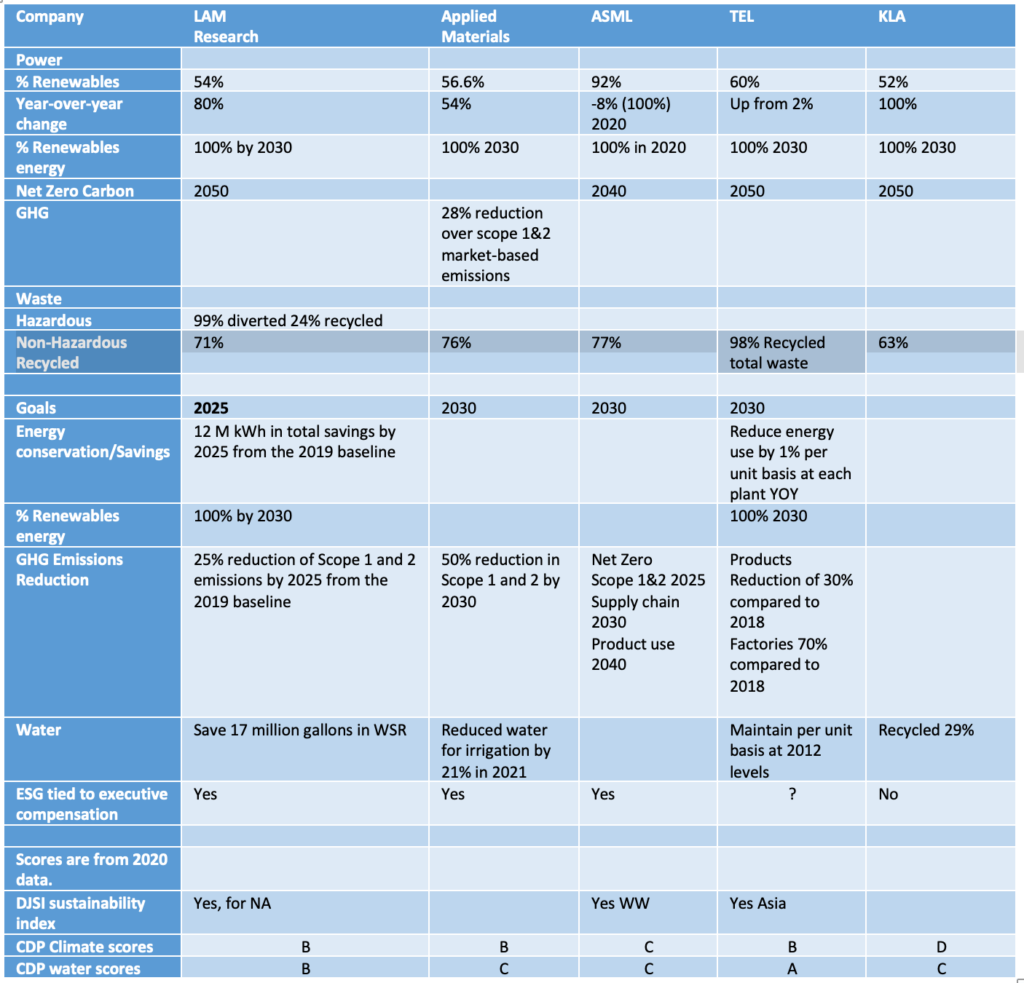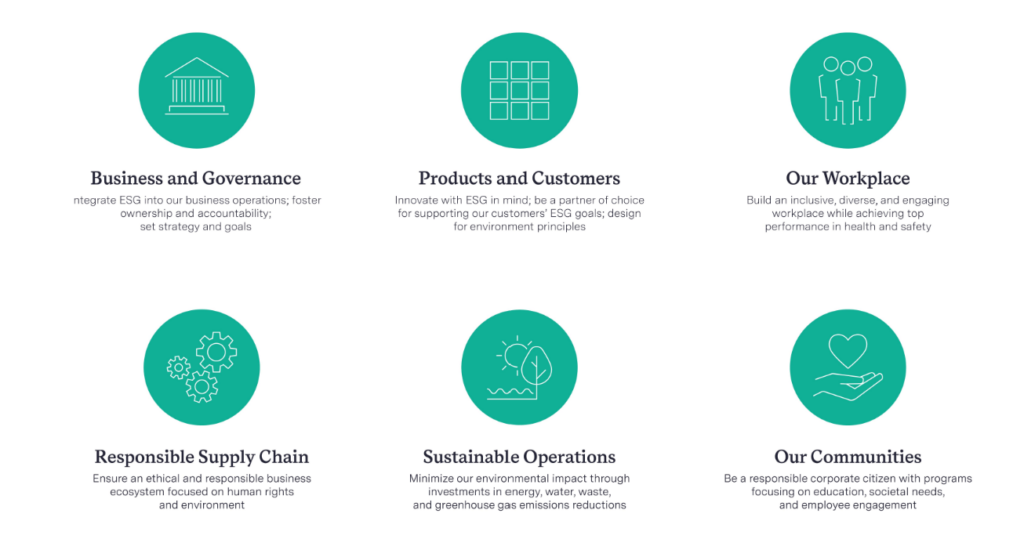2022 is a turning point year for the semiconductor industry in more ways than one. While it is one of the biggest years ever from a capital expenditures/semiconductor equipment perspective, it is also the year when sustainability became a major focus of nearly every company in the industry. At SEMICON West one full day was committed to a Sustainability Summit, followed by a day of presentations by the SEMI Startups for Sustainability Committee. The presentations demonstrated that the manufacturing side of the industry is on board working to refine its sustainability plans and help the industry achieve net zero as soon as possible. Since most of these presentations were a recap of companies’ sustainability reports that were released in Q2 or Q3 of 2022 below is a summary of the top five equipment companies’ sustainability current efforts and goals to achieve net zero.

In reviewing the chart, one can see that most companies are moving forward either in line or a bit more aggressively than the UN climate goals of net zero by 2050. From 2020 to 2021 there was a big jump in renewables, with the listed companies closing in on 60% of their energy coming from renewables. The exceptions were ASML which was at 100% in 2020 but saw a slight decline in % renewables due to their expansion. TEL only increased renewables by 2% but TEL is at 60% in 2021, slightly ahead of everyone except ASML. The sustainability monitoring scores are from 2020, as the 2021 scores have not yet been released. The scores and awards will start rolling out in late October and November.
A Closer Look at Lam Research
Lam Research has had a long history of working on sustainability. Focus on energy conservation and philanthropy have been rooted in Lam’s core values. Lam’s 2021 report was its eighth ESG Report. In a press release from June of 2022, Lam Research outlined both its path and progress to net zero emissions. Most of the data is listed in the table above, but I’ll post the sustainability highlights of the press release here.
- Increased renewable energy usage – 54% of the energy used by Lam globally in 2021 was renewable, with sites in Ohio, U.S.; Penang, Malaysia; and China facilities reaching 100% renewable energy.
- Decreased Scope 1 and Scope 2 greenhouse gas emissions by over 9% since 2019.
- Diverted 99% of hazardous waste from landfill in 2021.
- Saved 6.3 million gallons of water in water-stressed regions in 2021.
- Introduced a range of new and enhanced etch products that improved generator efficiency for NAND and foundry logic development by up to 15%, shortened clean times via chamber modifications by up to 30 to 50%, and decreased tool usage of helium by up to 80%.
- Established a new foundational strategy to propel sustainability throughout the supply chain, which spans over 25 countries. Lam also developed an engagement plan with ongoing training, support, and resources.
I had the opportunity to speak with Lam’s Chief Communications Officer, Stacey MacNeil about Lam’s renewed efforts. MacNeil, who was tasked with Lam’s rebranding efforts, was also tasked with revamping the sustainability focus. The ESG effort starts at the top. MacNeil stated that the ESG efforts are one of Lam’s president and CEO, Tim Archer’s top focuses at the company. If ESG was not integrated into management it would likely take a slower path.
To ensure full management integration, Lam has created working groups for the net zero effort, with executive leads responsible for the outcome of that specific initiative. More importantly, Lam has outlined detailed levels of executive compensation for the execution of the ESG efforts within Lam Research in its recently released proxy. Lam also has a $1.5 billion dollar credit facility, where the interest rate is tied to achieving ESG goals. The financial incentives that Lam has tied to the ESG efforts are more significant than I have observed for most companies, and this puts more weight behind Lam’s ESG efforts.

During the Interview, we discussed employee engagement. I commented on several linked-in posts from the Malaysia team, and how they seemed to be very engaged in the ESG efforts. MacNeil said there was a very strong employee engagement worldwide in the ESG space. Employee Resource Groups (ERG) tackle different grass root projects within Lam, based on the passion of the employees. The Lam Employee Sustainability Community is a recent addition to the ESG effort. There is a bit more in the note taken from a SEMI blog post.
Lam Employee Sustainability Community (LESC)
Once a sustainability-focused grassroots movement connecting passionate employees, LESC is now the newest employee resource group (ERG). The group seeks to empower fellow colleagues by providing learning opportunities, hosting a forum for discussion on environmental challenges, and also increasing the visibility of ESG initiatives across the company
It’s encouraging to see the revamped commitment to ESG by Lam, as well as the commitment from the rest of the industry. Tackling sustainability will be a long-term challenge for semiconductor equipment manufacturers. It’s good to see the industry is off to a strong start. Let’s hope we can stay strong for the long haul.



















